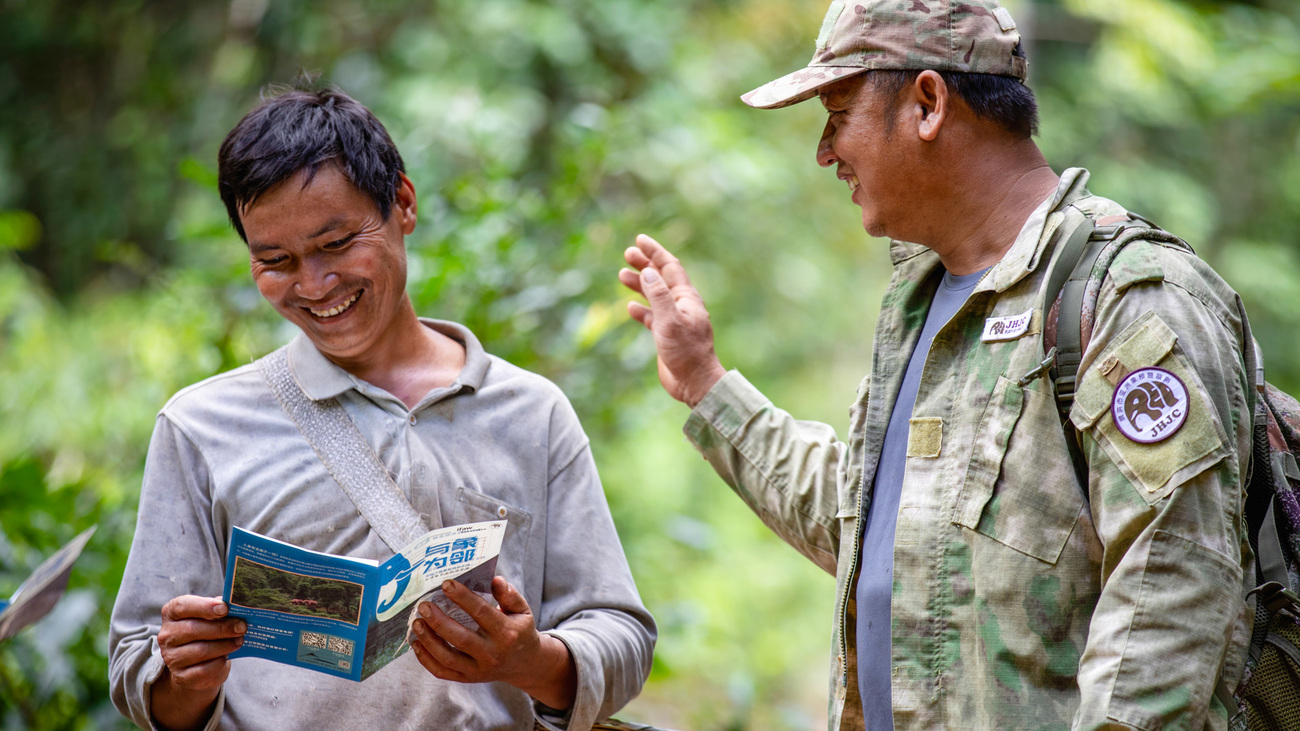Azzedine Downes
I have never been satisfied with just fighting the good fight. We need to actually make a difference.
Social empowerment: the beginning to ending human-wildlife conflict

Wildlife conservation impacts more than just animals, and one key realization after five decades of experience in the field is that we cannot protect wildlife if we exclude people from the equation. As the CEO & President of IFAW, I have personally visited every project site, engaging with people living with wildlife. It is essential for me, as a conservationist, to connect with the people closest to the issues we are working to resolve.
We often come across headlines highlighting “human-wildlife conflict,” particularly in African countries rich in wildlife but facing resource scarcity. It is easy for people outside the affected areas to suggest that raising awareness about the importance of wildlife is the solution. However, put yourself in the shoes of a mother whose child faces the daily threat of being attacked by a lion on his way to school. While I understand the critical role of lions, elephants, and other endangered species in our ecosystem, I cannot ask people who are threatened by wildlife to prioritize the care of these animals at the expense of their own livelihoods and lives.
Social empowerment (SE) is a concept that promotes autonomy, self-determination, and direct participatory democracy. It considers the sociocultural beliefs, knowledge, needs, interests, challenges, and opportunities of individuals and communities in relation to the ecosystems they inhabit and utilize. SE aims to build the capacity of people living with wildlife to adapt to a changing environment by positively influencing and enhancing their individual and collective coping mechanisms and resilience.
Protecting and restoring ecosystems are crucial for sustaining biodiversity and the ecosystem services that support social well-being and development. However, these efforts cannot succeed without active and inclusive involvement and empowerment of local people living with wildlife who depend on and manage these ecosystems. Elevating the role of these people and considering their needs should be a priority.
How people living with wildlife cope with the dynamics and impacts of change is strongly influenced by their assets and capabilities, individually and collectively. These assets include access and control rights over land, housing, livelihoods, health, education, social and psychological safety, identity, participation, and representation. When SE is constructed consultative-ly and inclusively, it enables sustainable patterns of adaptation and self-reliance among people living with wildlife by expanding their livelihood options and enhancing their capacity to cope with rapidly changing socio-ecological environments.
In promoting ethical and equitable biodiversity conservation, social empowerment serves as an overarching pillar for sustainable local natural resources governance and management. Therefore, it is imperative to consider the socioeconomic and ecological contexts when designing conservation projects.
The connection between social empowerment and sustainable development cannot be overlooked. Conservation and development are intertwined through the human dimensions of environmental degradation and can only be effectively addressed when viewed within the spectrum of each other. Social empowerment is an anticipated outcome of these joint efforts.
From a broader, telescopic perspective, the challenges to both development and the ecosystem arise due to a lack of resources that enable people living with wildlife and animals to thrive in and around our conservation priority areas. Consequently, many conservation agencies, IFAW included, have adopted community conservation models to balance and promote social empowerment. These models focus on equipping local communities living with wildlife with skills and resources to improve local socioeconomic conditions, preserve ecosystems, and enhance biodiversity health and structure.
We address poverty alleviation by influencing people living with wildlife through social attributes such as perceptions, attitudes, and knowledge. By creating legitimacy and ownership for conservation, strengthening support for protection, and delivering economic, social, and cultural benefits, we aim to have a positive impact.
IFAW stands out in its approach, a belief that we must change the very face of conservation. The people living with wildlife, some of which can actually kill them, must not be treated as a side project to conservation. They must be an integral part of the conservation movement. They have lived outside the wildlife fences for too long.
Therefore, our transformative SE interventions strive to influence the characteristics of people living with wildlife and the environment in which conservation operates by providing space for the practical and accessible application of indigenous and traditional knowledge in conjunction with contemporary scientific understanding.
To end this on a good note, there is increasing acceptance globally that social empowerment is essential for conservation success and achieving sustainable development outcomes—we are on the right path to getting there. So next time you read about the human-wildlife conflict in the headline, think of IFAW on the ground lending a helping hand and promoting social empowerment. Remember, without people—people living alongside wildlife—we cannot save our planet.
Azzedine Downes
I have never been satisfied with just fighting the good fight. We need to actually make a difference.
Our work can’t get done without you. Please give what you can to help animals thrive.
Unfortunately, the browser you use is outdated and does not allow you to display the site correctly. Please install any of the modern browsers, for example:
Google Chrome Firefox Safari